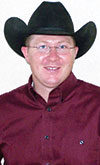The downside is that we don’t know what might happen in the new year as we approach what are typically the coldest months of the year.
Most cattle producers know and appreciate that cold weather increases nutrient requirements. However, the obvious questions that come to mind are “What is cold to a cow?” and “What increases (energy, protein, etc.) and by how much?”
Cattle are most comfortable within the thermoneutral zone when temperatures are neither too warm nor too cold. During the winter months, cattle experience cold stress any time the effective ambient temperature, which takes into account wind chill, humidity, etc., drops below the lower critical temperature.
The lower critical temperature is influenced by both environmental and animal factors, including hair coat and tissue insulation (body condition).

Table 1 lists the estimated lower critical temperatures of cattle in good body condition with different hair coats. In wet conditions, cattle can begin experiencing cold stress at 59ºF, which would be a relatively mild winter day.
However, if cattle have time to develop a sufficient winter coat, the estimated lower critical temperature under dry conditions is 18ºF.
Cold stress increases maintenance energy requirements but does not impact protein, mineral or vitamin requirements. The general rule of thumb (for a cow in good body condition, BCS = 5 or greater) is to increase the energy density of the ration by 1 percent for each degree (Fahrenheit) below the lower critical temperature.
The classic response to cold stress in confinement situations is an increase in voluntary intake. However, it has been documented that grazing beef cows may spend less time grazing as temperatures decline below freezing, which reduces forage intake and makes the challenge of meeting the cow’s nutrient requirements even greater.
In many cases, feeding a greater amount of low-quality hay may not provide sufficient energy. Therefore, providing additional energy by feeding a relatively higher-quality hay or grain may be required. More information on cold stress and nutrition may be found in Kansas State’s “Beef Cow Nutrition Guide,” publication #C-735, which may be accessed online. ![]()
References omitted due to space but are available upon request. Click here to email an editor.
—Excerpts from Kansas State University Beef Tips e-newsletter
PHOTO
In wet conditions, cattle can begin experiencing cold stress at 59ºF. But if cattle have time to develop a winter coat, the lower critical temperature under dry conditions is 18ºF. Photo courtesy of Paul Marchant.
Justin Waggoner
Beef Systems Specialist Kansas State University











